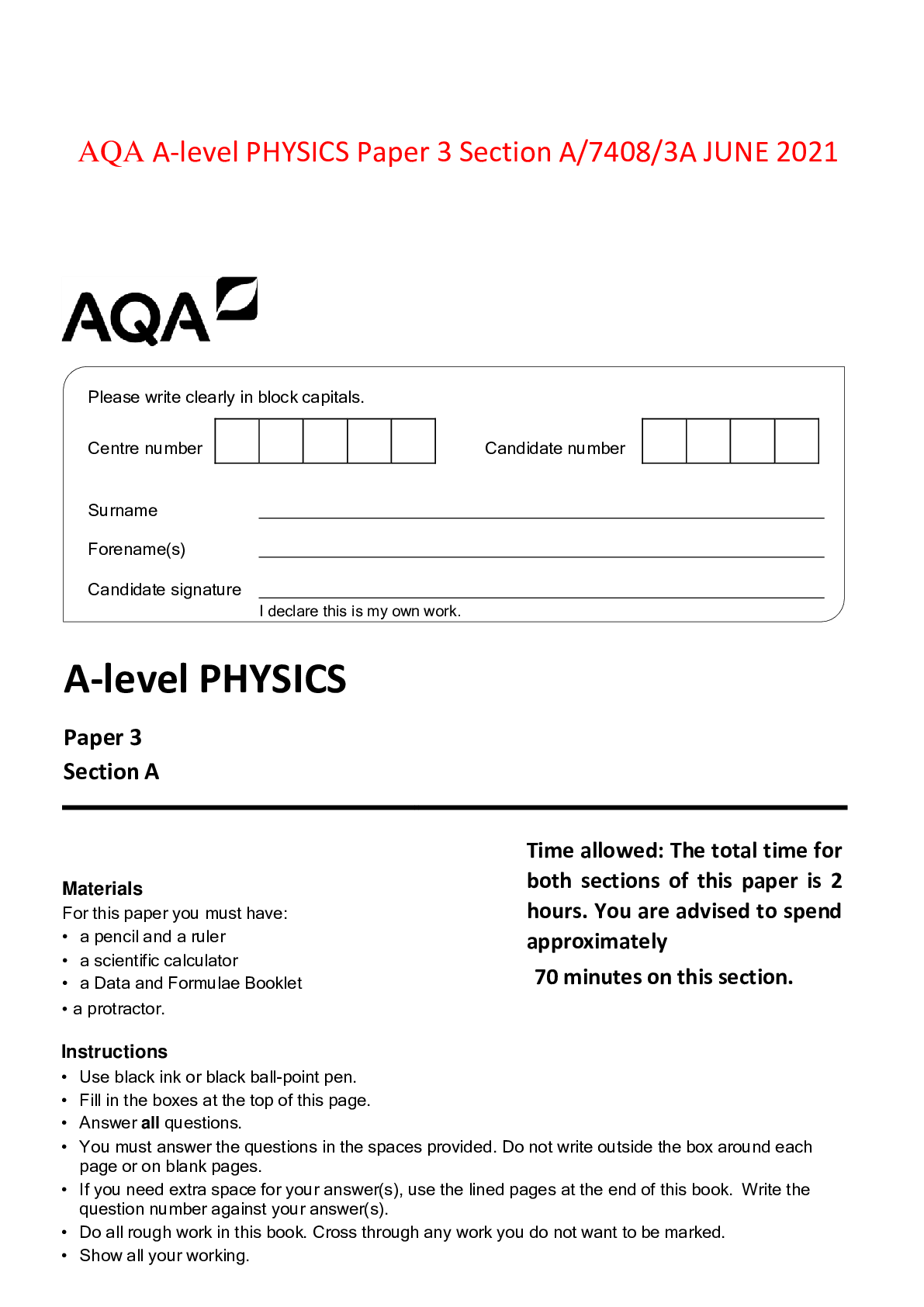Biology > AQA Question Papers > AS Level Biology A H020/02 Depth in biology Biology A_H020:02 Question Paper Oct 2021 (All)
AS Level Biology A H020/02 Depth in biology Biology A_H020:02 Question Paper Oct 2021
Document Content and Description Below
The information below is about carbohydrates. • Glucose is a monomer of polysaccharides such as glycogen and starch. • Glucose is an important source of energy in animals and is transported in t... he circulatory system. • Glycogen is an energy storage molecule found in many animals. • Starch is an energy storage molecule found in many plants. • Amylopectin is one of the two polysaccharides that constitute the molecular structure of starch. (a) (i) State one property of glucose that allows it to be easily transported in animals. ...................................................................................................................................... [1] (ii) Explain how the structure of glycogen differs from that of amylopectin to make it better suited as an energy store in animals. ........................................................................................................................................... ........................................................................................................................................... ........................................................................................................................................... ........................................................................................................................................... ........................................................................................................................................... ........................................................................................................................................... ........................................................................................................................................... ...................................................................................................................................... [3] (iii) Fig. 1.1 shows the molecular structure of beta glucose. CH2OH OH O OH OH HO H H H H H Fig. 1.1 Describe how the structure of alpha glucose would be different from the molecule shown in Fig. 1.1. ........................................................................................................................................... ...................................................................................................................................... [1] 3 © OCR 2021 Turn over (b) Fig. 1.2 shows the start of the ring structure of ribose. Complete the diagram to show the position of the carbon atoms. There is no need to include the –H and –OH groups. [1] O Fig. 1.2 4 © OCR 2021 2 (a) The immortal jellyfish, Turritopsis dohrnii, and the sea bass, Dicentrarchus labrax, are both found in the Mediterranean Sea. (i) The table below shows some data on these two organisms. Organism Surface area (cm2) Volume (cm3) Immortal jellyfish 10.5 1.5 Sea bass 270.0 810.0 A student made the following statement: ‘The immortal jellyfish does not need a transport system to transport oxygen as it has a very large surface area. The sea bass does need a transport system as it is a larger organism.‛ Use the data in the table to evaluate the statement made by the student. ........................................................................................................................................... ........................................................................................................................................... ........................................................................................................................................... ........................................................................................................................................... ........................................................................................................................................... ........................................................................................................................................... ........................................................................................................................................... ...................................................................................................................................... [3] 5 © OCR 2021 Turn over (ii) Fig. 2.1 shows the circulatory system of the sea bass. Heart Capillaries in gill Capillaries in rest of the body Fig. 2.1 Name the type of circulatory system shown in Fig. 2.1. ...................................................................................................................................... [1] (iii) The circulatory systems of the sea bass and mammals are described as closed circulatory systems. Define the term closed circulatory system. ........................................................................................................................................... ...................................................................................................................................... [1] (iv) State two differences between the closed circulatory system of the sea bass and the closed circulatory system of a mammal. 1 ........................................................................................................................................ ........................................................................................................................................... 2 ........................................................................................................................................ ........................................................................................................................................... [2] 6 © OCR 2021 (b) A group of students were examining a mammalian heart prior to dissection. The atria and ventricles were clearly visible. (i) Name two arteries that could be seen by the students. 1 ........................................................................................................................................ 2 ........................................................................................................................................ [2] (ii) The students then carried out a dissection of the heart. Fig. 2.2 is an example of a drawing from one of the students. Left ventricle Right ventricle Tricuspid valve X Muscular wall of ventricle Fig. 2.2 Name the structure labelled X on Fig. 2.2. ...................................................................................................................................... [1] 7 © OCR 2021 Turn over (iii) Another student pointed out that there were structural and labelling errors in the drawing in Fig. 2.2. In the space below, list three of these errors and the correction you would make. Biological drawing errors are not required. Error and correction 1 [Show More]
Last updated: 1 year ago
Preview 1 out of 24 pages
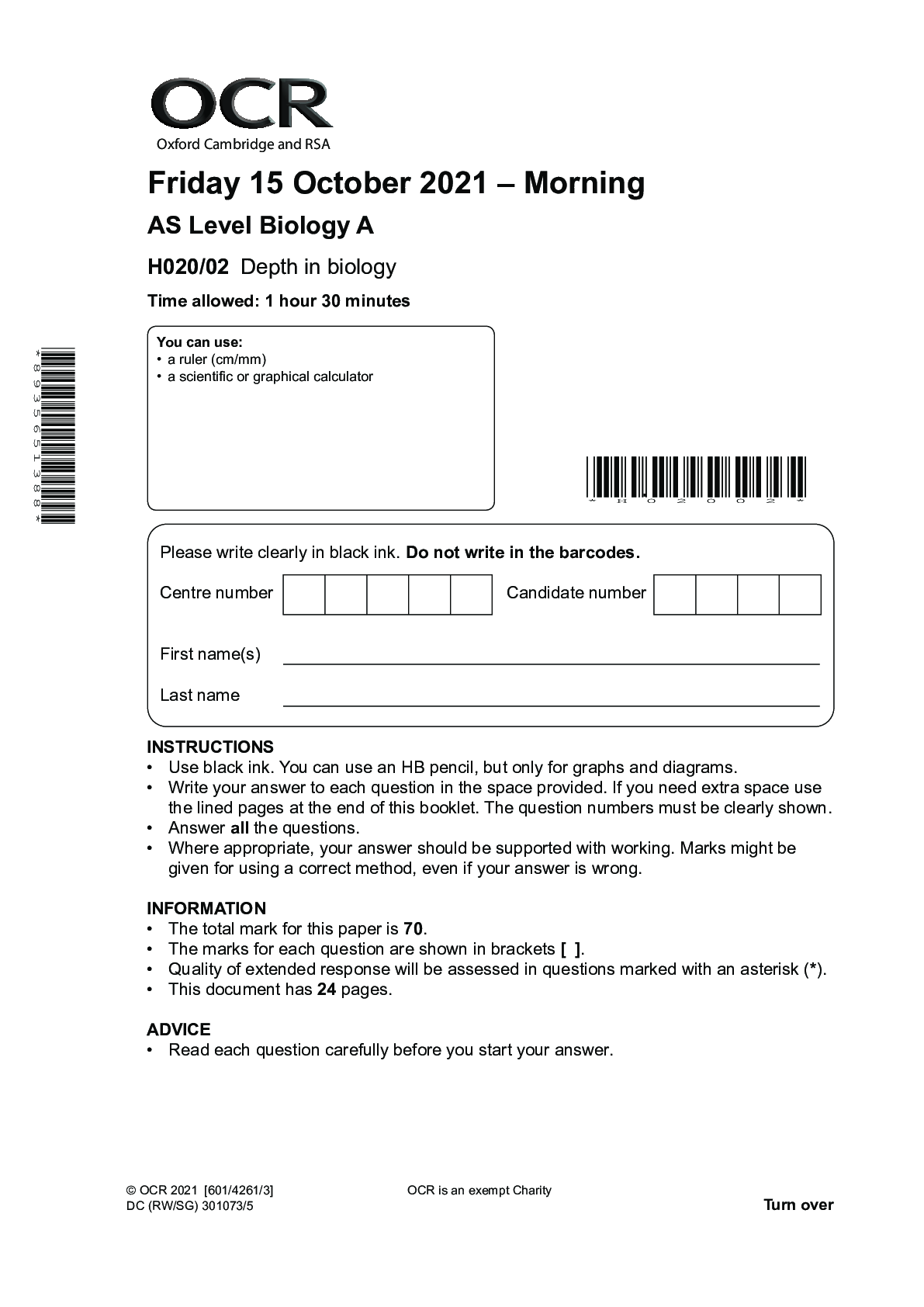
Reviews( 0 )
Document information
Connected school, study & course
About the document
Uploaded On
Jul 01, 2022
Number of pages
24
Written in
Additional information
This document has been written for:
Uploaded
Jul 01, 2022
Downloads
0
Views
94


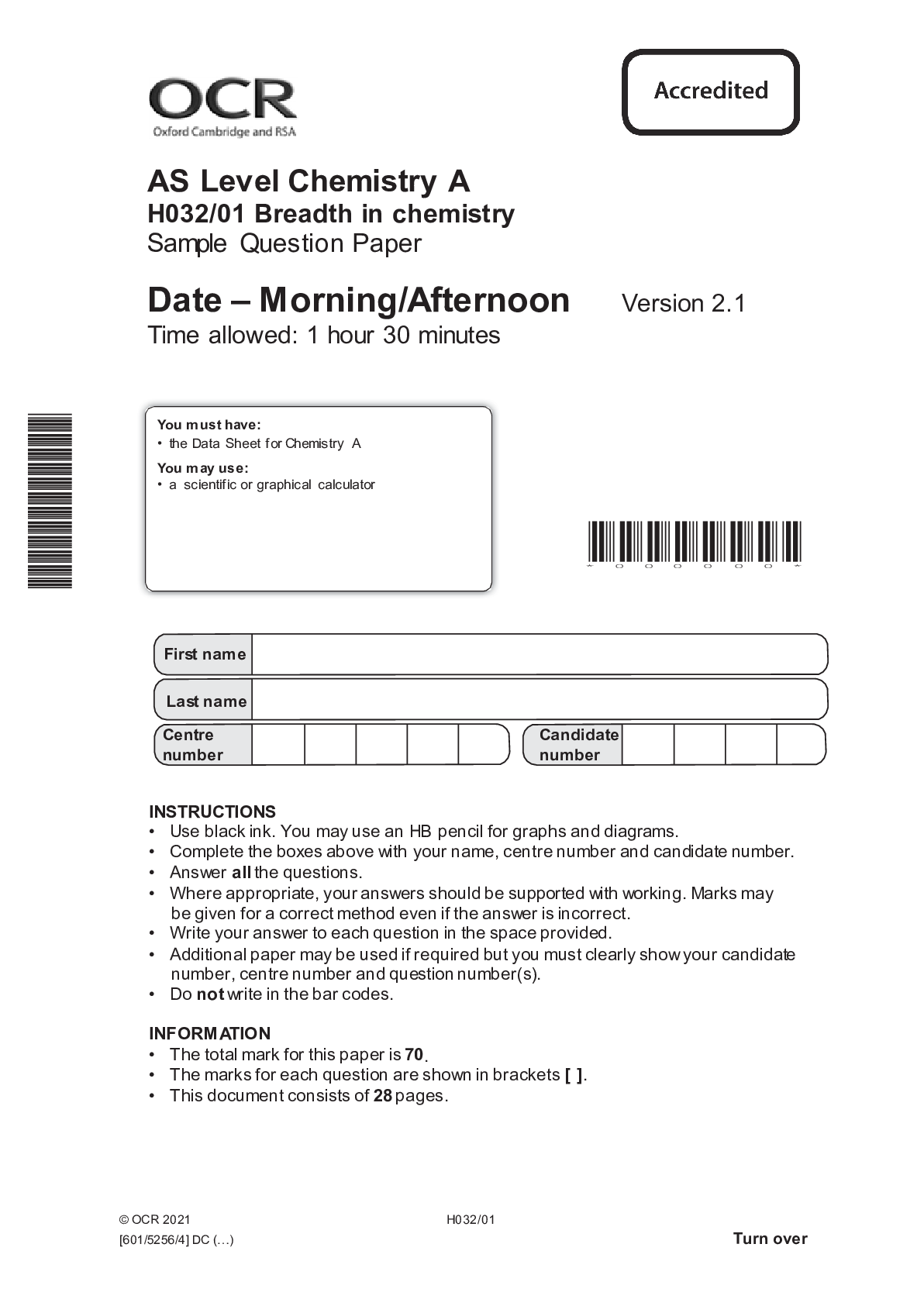
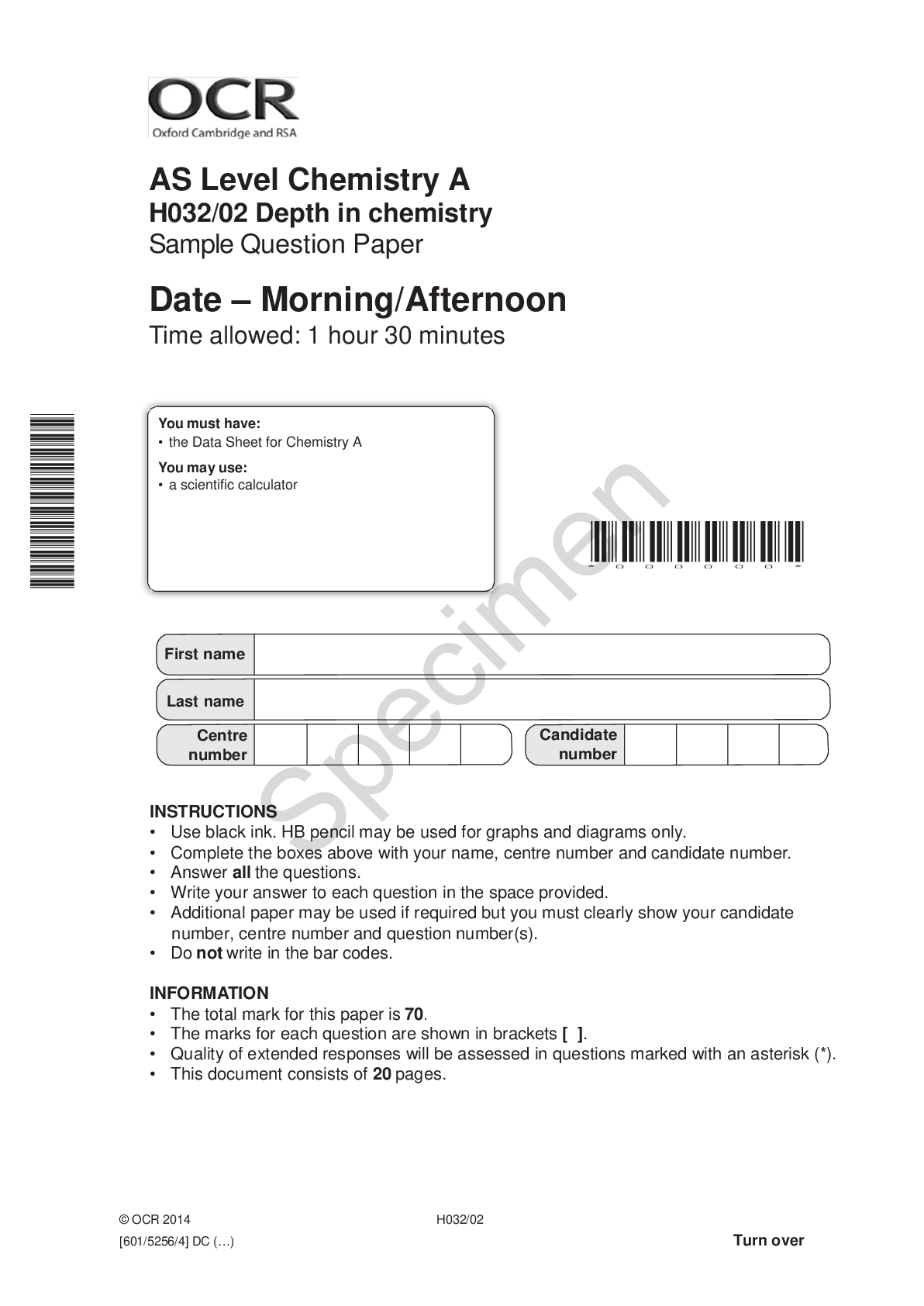
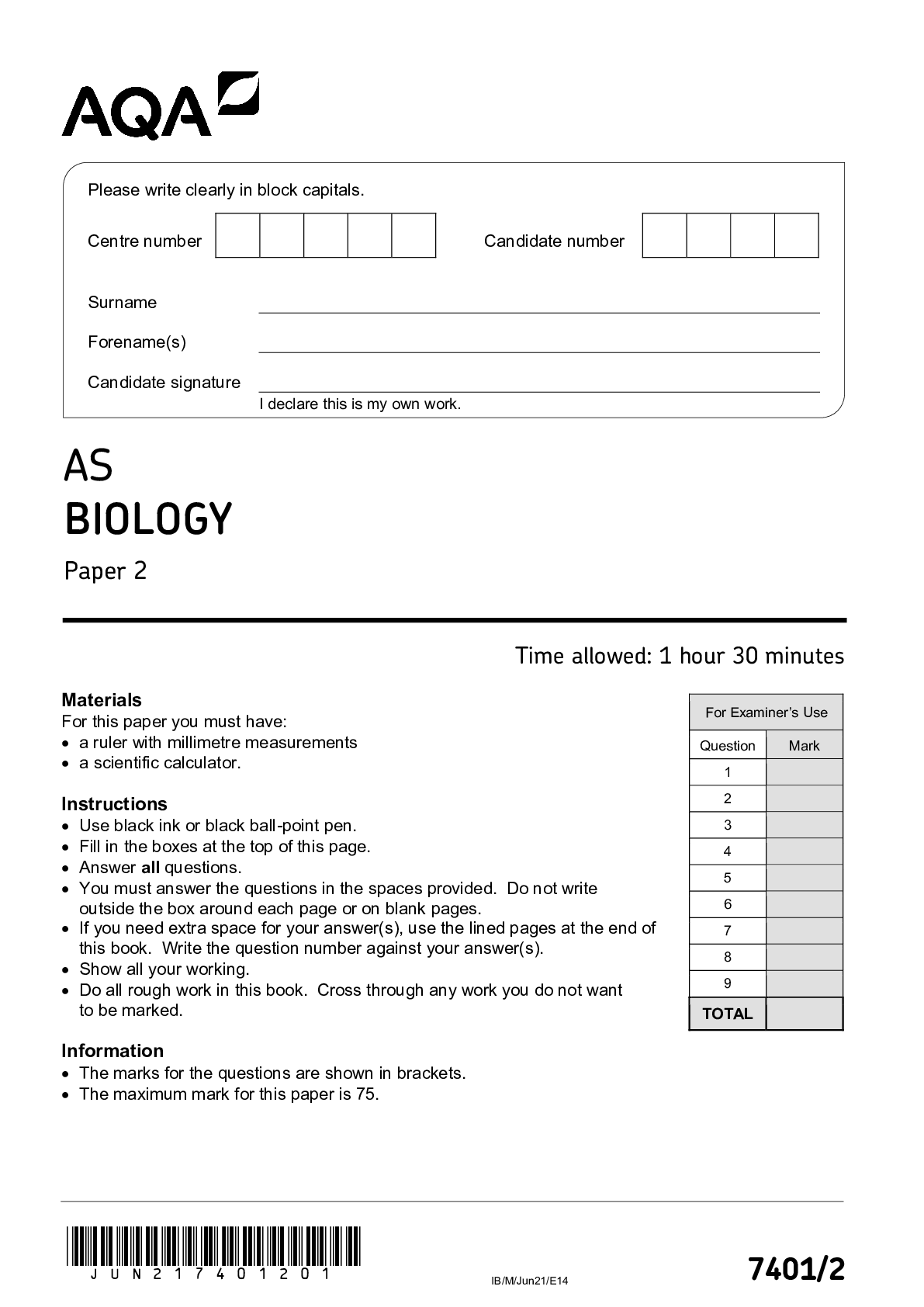




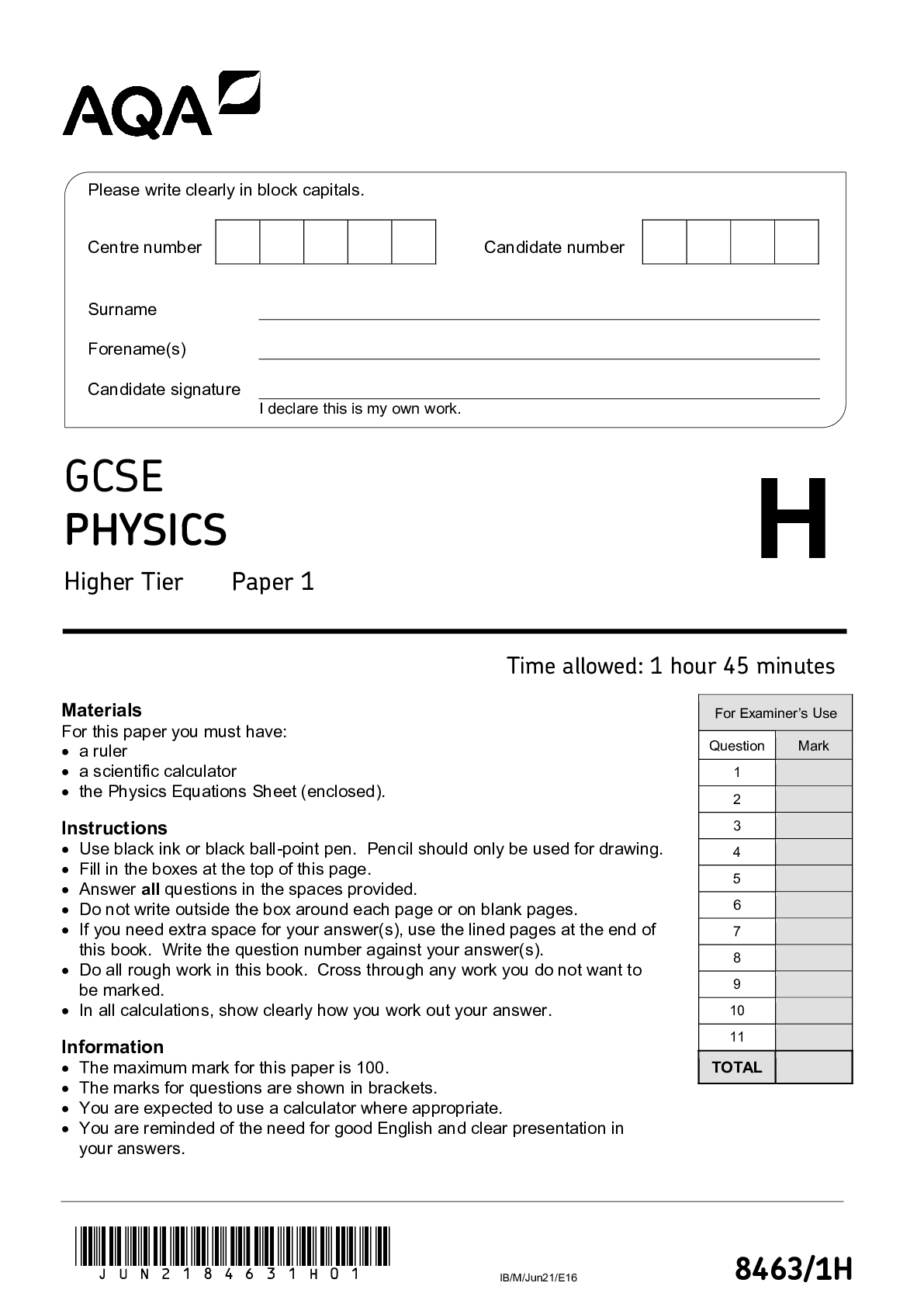



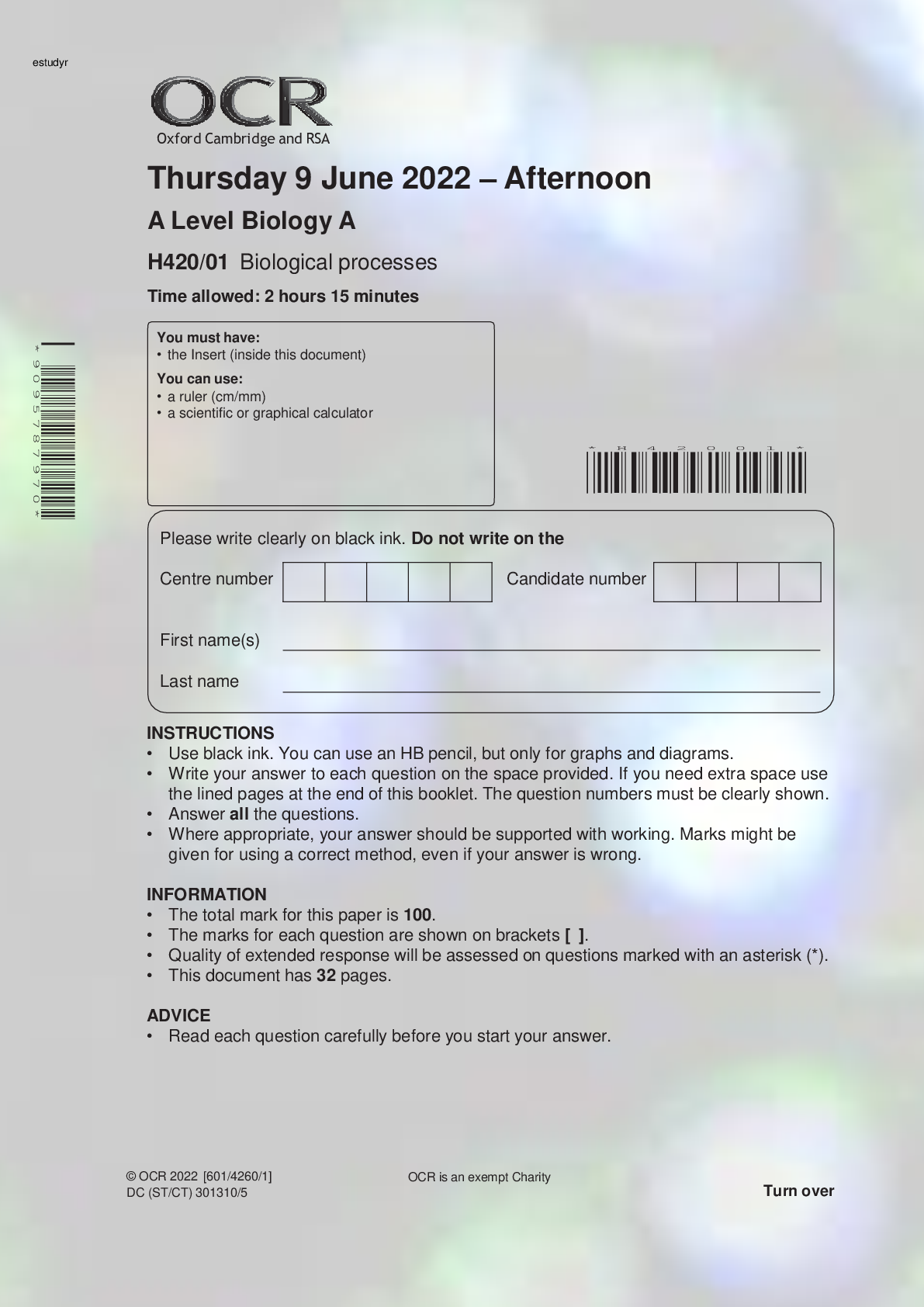





 - Paper 3 v1.png)
 - Paper 2.png)
 - Paper 1.png)
